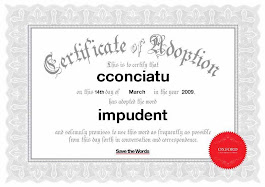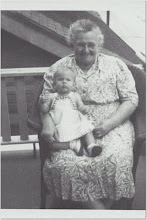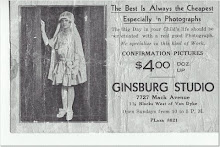WWII Mail From Mom
To which of the 7,500 Pfc. Robert Smith's does this belong????
Soldiers love to get mail. That's probably what the M in morale stands for - and the Army is always on the move. Things can get dicey - especially when thousands of soldiers are out in the middle of the forest at Ardennes or some arid atoll in the South Pacific or any of hundreds of places they "visited" during wartime.

That's where the "Six-Triple Eight" comes in!
LTC. Charity Adams, Women's Army Corps led the 6888th Central Postal Directory Battalion
."Not only was she the first black woman commissioned as an officer in the Women's Army Corps, Charity Adams also attained the highest rank possible in the Corps below the directorship -- Only one full colonel was permitted in the WAC, and that rank was held only by the Director. She was also the commanding officer of the first battalion of black service women to serve overseas during WWII.
This unit, the 6888th Central Postal Directory Battalion (or "Six Triple Eight"), did an extraordinary job of redirecting mail in the European Theater of Operations. Troops were reassigned quickly, battle casualties were relocated often, and the sheer number of U.S. personnel in the ETO was staggering -- a total of about seven million, with more than 7,500 of them, for instance, having the name of Robert Smith. But the Six Triple Eight broke all records for redirecting mail. They knew the importance of their job, in maintaining morale." (Museum of Black WWII History)
The 6888th marches in the town square at Rouen, France on the feast day of Joan D'Arc. This is the spot where Joan D'Arc was burned at the stake on May 30, 1431
These exceptional women were here to do battle of their own - move the mail.

LTC. Charity Adams reviews her unit.
Despite having the same patriotic reasons for serving our Country, African Americans were segregated, given menial jobs, discriminated against and suffered the same inequities as they did at home. You would think America would be too busy for racial bias in the thick of battle but, of course, ignorance often takes the lead. Go here HERE for more information about this fine officer.
A Pretty French Postcard
Note the "free" postage for servicemen and the Army Examiner stamp in the lower left hand corner. Sgt. Henry Rabinowicz posted this card on December 21, 1944 from somewhere in France. He said:
Dear Lillian, I picked this greeting card especially for you to make double sure, my sentiments are expressed both in English and French. Goodbye for now. Affectionately. Henry. It appears from his return address, that Henry was part of the huge Replacement Pool of soldiers that were brought in late 1944 as replacements for infantry casualties. Replacement troops did not necessarily receive the same battle training of the infantry they were replacing. They lacked the cohesion that troops who trained together and fought together had. The seasoned soldiers would pretty much ignore them - their infantry may have suffered 50 to 70% casualties and here comes new guy with creases in his pants. "I don't know him, I'm not talking to him, he's just gonna die anyway." was the psychological attitude.
I found Henry's service card at ancestry.com, stamped with the word WOUNDED. I've not found anything further yet - but will add whatever additional information I can find.
Jewish Servicemen Card For Henry Rabinowicz
More links to Postcard Friendship Friday are HERE
Links to Sepia Saturday posts are HERE










































.JPG)





































20 comments:
Thank you for a fascinating series of images, yet again, and an insight into what must be a relatively unknown side of WW2 history.
I knew that soldiers sent and received a lot of mail, but I never thought about how the mail was handled or knew that there was anything like a postal battalion.
WOW! Thanks for the absolute tops in posts. My immediate thoughts went to the experience of sending and receiving mail in a war zone, and how I really looked forward to the 'care' packages from home. Your post brought back to the highs and lows of mail call, to be sure!
Great post. Always good to learn something new. I've thought about how mail gets/got around during war. Amazing! Happy PFF!
Wonderful post. I learned a lot - who know there were so many Robert Smiths? Thank you.
Fascinating how these little pieces of paper contain so much interesting history.
Wonderful post.
Fascinating insight into WW2 history and particularly black womens' role. Do you know of Sgt Shenloogian made it?
Great post! I've had military pen pals since I was in High School! Well, I don't really have a pen pal now, but I do still send them care packages via anysoldier.com. :)
Fantastic post. Three cheers for the Women's Army Corps.
How very interesting! I've always thought it was fairly miraculous that mail reached, and still reaches, war zones. I have a few postcards from northern France where the place name on the front of the card has been cut off or erased by the censor.
I've not made my rounds yet - our internet provider is not providing a strong enough signal. Looking forward to visiting everyone as soon as I can! Howard - yes he made it home, married someone other than the postcard friend and told his story in 2002. I left a link in the post so you can see firsthand his experiences in WWII and after. I found no further info on the other soldier.
There is a lot of WWII history hidden in postcards like these. To get links to a soldier in this way is great.
I'm still trying to get information on my brother's service on aircraft carriers in the war and after.
Wonderful post full of history.... Thanks for sharing and Happy PFF!
Very interesting and great post. I love sending and receiving postcards. Mine is up - My PFF Entry. Thanks for sharing and Happy PFF!
Also interesting to learn about the women who went to work doing "men's jobs" during the war - if you haven't ever seen the documentary "the Life and times of Rosie the Riveter", it's well worth the time: http://en.wikipedia.org/wiki/The_Life_and_Times_of_Rosie_the_Riveter
Amazing what determination can cram on a postcard! LOL
Re;The Photograph In The Town Square at Rouen.What An Amazing & Seldom Seen Image.
Great Post.Thank You.
It’s amazing how much truth is hidden behind seemingly benign and cheery Postcard messages.
That was a really fascinating read.I always get emotional when I read stories about war and soldiers-- mostly sad about the futility of war but sometimes also moved by courage and triumph-- and this time, women power :)
I have seen some of the letters that my grandmother received from her brothers when they were overseas in WWII. Amazing so many were delivered.
Post a Comment